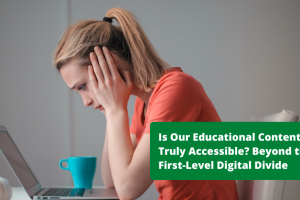Developing Our Constructive Feedback
By Mr. Jose Mari Carpena, Educational Technologist, ASIST
September 2021
In a previous article, we discussed the benefits of using rubrics in assessing student learning. While we established that rubrics bring many advantages with their usage, they also bear certain limitations. Besides being possibly vague (as elaborated in the previous article), an overdependence on rubrics may lead to a surface-level reading or understanding on the part of the teacher, and in turn may lead the teacher to provide surface-level feedback to the student, as warned by Flynn et al. Thus, to complement the usage of rubrics, we take a step further by looking at another way of giving feedback: qualitative comments, or more commonly known as constructive feedback.
We are all familiar with the concept of qualitative feedback in assessment; whether it was verbally given to us by our teachers, or it was written on the side of our exams, journals, or notebooks, we have all experienced it. As teachers, we most likely have given students qualitative feedback as well, but have we actually thought about how these help them in particular?
Dr. Uy’s experience in noticing students improve is not unfounded. Indeed, Ms. Sullano shares this sentiment.
It is not a far-fetched thought to assume that a student’s performance will improve when they receive constructive feedback. However, as Irons discusses extensively in his book “Enhancing Learning Through Formative Assessment and Feedback”, this type of feedback isn’t particularly helpful if students do not recognize it as constructive feedback. Such cases may arise when students misinterpret the feedback given to them. Sometimes, the constructive feedback we gave that we wished would help our students may even have a negative effect on their performance, or even their motivation in the first place. So how can we make sure that our constructive feedback is effective and appropriate for our students?
Brookhart (2017) provides us with three general “rules” when it comes to providing constructive, qualitative feedback. In particular, our feedback should have:
- Clarity, as in we are clear in what we are saying/suggesting, and we are not vague in our feedback,
- specificity, and
- a proper tone.
These suggestions echo those of Boud, who provides a more comprehensive list. According to him, when giving feedback we should:
- Be realistic,
- Be specific,
- Be sensitive to the goals of the person,
- Be timely,
- Be descriptive (explain the reasoning behind your feedback),
- Be consciously non-judgemental,
- Not compare (the work with other peoples’ work)
- Be diligent (be critical of our own feedback),
- Be direct,
- Be positive (try to comment on the good aspects of your students’ submissions as well) and,
- Be aware (try not to grade students’ work when you’re in a bad mood. Have you ever noticed that as you check more and more papers in one sitting, you start to become more irritated at wrong or illogical answers?)
As we can see, there are many guidelines which we have to follow in order to appropriately give our students the constructive feedback they need and deserve. However, we all know that Boud’s third guideline is quite hard to follow. Simply reading student submissions takes a long time, much more when we painstakingly write qualitative and formative comments. So how do Dr. Uy and Ms. Sullano suggest we overcome this hardship?
Indeed, we must always remember that as teachers, it is our responsibility that our students actually learn. And one sure way to do that is to create learning opportunities for our students in their assessments themselves.
Now, I’d like us to look at the guidelines once again. Have you ever received feedback from a former teacher which went against the guidelines? Did you ever have a teacher give you feedback way too late? Or did you ever receive feedback which was a little too aggressive, to “mean”? Or feedback which was simply too vague? If you ever did, recall how you felt afterwards. What did you feel? Did it ever affect your motivation? Share your experiences down below in the comments!
References
Boud, D. (2013). Enhancing learning through self-assessment. Routledge.
Brookhart, S. M. (2017). How to give effective feedback to your students. ASCD.
Flynn Jr, J. E., Tenam-Zemach, M., & Burns, L. D. (2015). Introduction: Why a book on rubrics? Problematizing the unquestioned. Rubric nation: Critical inquiries on the impacts of rubrics in education, xi-xxx. Information Age Publishing, Inc.
Irons, A. (2007). Enhancing learning through formative assessment and feedback. Routledge.
Related Canvas Guides:
How do I add annotated comments in student submissions using DocViewer in SpeedGrader?
Tag:assessment, class, constructive, education, feedback, qualitative, student




